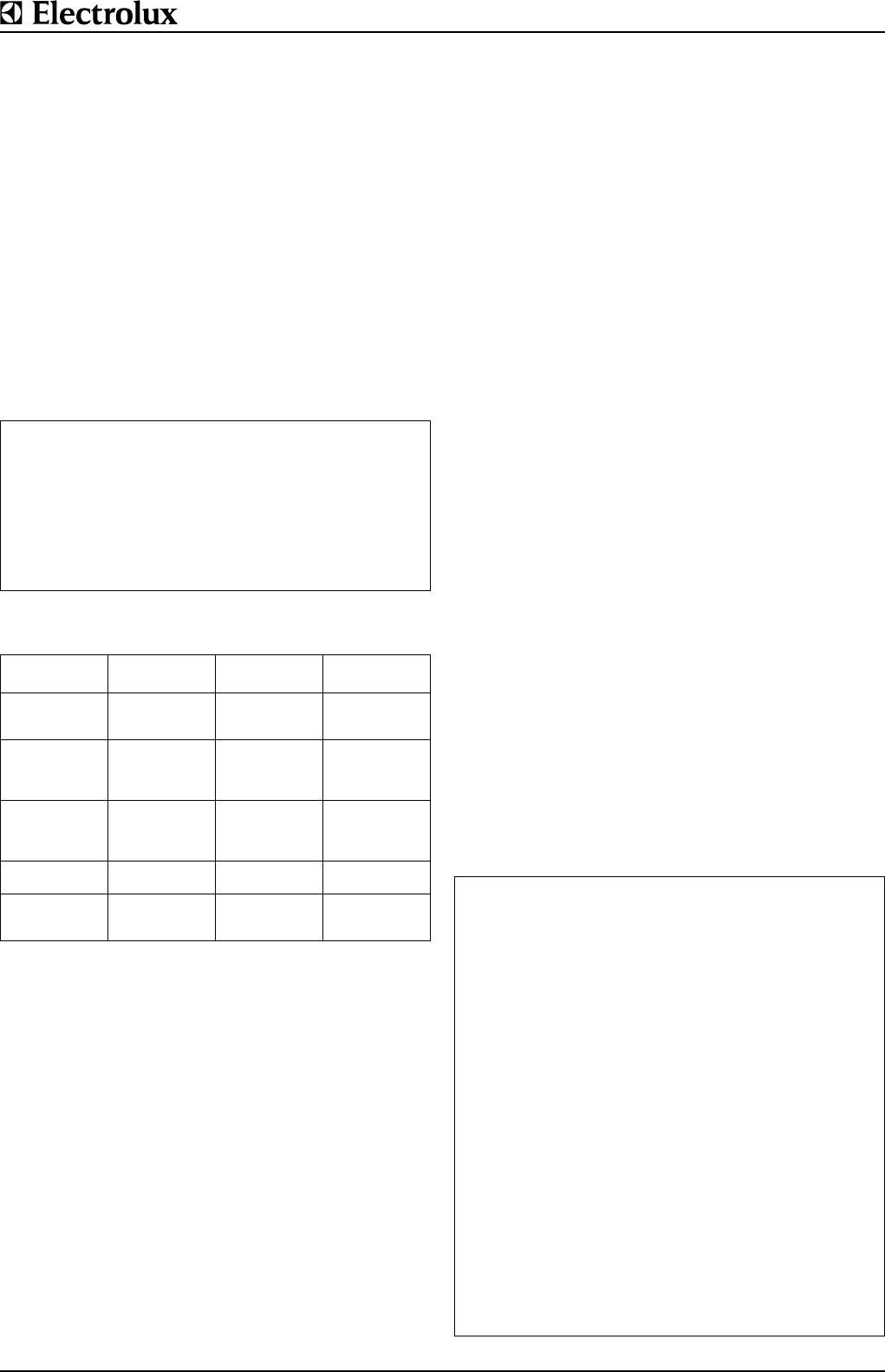
OPERATING INSTRUCTIONS
Page 8 62.9695.01
If the nominal temperature set on the display (AT) is below the
boiling point of water, this temperature is attained on heating
up and then maintained at this value by the electronic controls
and the careful supply of energy. The nominal temperature is
not exceeded in this process.
4.9 Switching off
The appliance is shut down by turning the power isolator (H)
(available as an option) as well as the control switch (S) to
zero. All lights will go out when this is done.
In the case of faults, the appliance must also be disconnected
from the electric supply connection.
4.10 Power failure
The loss of mains electricity while a cooking pan is being used
can result in cooking being halted or interrupted. Cooking staff
are then required to make an additional intervention in the con-
trols or to monitor further processing.
5. WORKING RULES
Pay attention to the sensitivity of the temperature control sys-
tem when placing food on the bottom plate of the braising pan.
The heat will remain evenly distributed if the load-ing of the
pan is started in the middle of the front half of its plate. This
same zone should also be used when roasting small portions
of food.
Loading the pan
The pan has a level indicator on its rear side. The maximum
loading mark is situated about 1.6 inch (4 cm) below the pour-
ing level of the spout. When being loaded with liquid sub-
stances in the horizontal position, the pan must be filled up to
this maximum loading mark only.
For the "Cook" function (temperature setting up to 212°F
(100°C)) to operate correctly, the pan must be filled with food
to a depth of at least 1.2 - 1.6 inch (3 - 4 cm) to prevent the
food from being burnt. The SOFT function should be activated
if the pan is filled with less food.
Sticky food
To prevent the food from sticking to the bottom of the pan, the
following procedure can be applied:
Mix about 2 kg of unpeeled, uncleaned slices of potatoes with
about 2 kg of salt and spread out this mixture on the empty
cold bottom of the pan. Afterwards, heat up the pan gradually
to the maximum heat during one hour. Then let it slowly cool,
without quenching it with water.
6. CLEANING
The pan should be cleaned after each use.
Before being cleaned, the appliance must be switched off and
allowed to cool.
Pan with a polished steel bottom
Do not use water for cleaning. This would cause the food to
stick to the pan, which in turn would necessitate a treatment as
described in chapter 8. Clean the pan by rubbing it with a dry
cloth or with absorptive paper.
Pan with a chrome nickel steel plated bottom
In general it suffices to clean the pan with hot water, a stand-
ard grease solvent, and a brush. Afterwards, rinse the pan with
hot water and rub it dry with a cloth or ab-sorptive paper.
Cover, lid and panels
The cover, lid and panels are made of stainless chrome nickel
steel. Clean them with hot soapy water and a stan-dard grease
solvent and rub them dry.
In general
Do not clean the appliance with steel brushes, steel wool, cop-
per cloths, abrasive products, etc., as these would destroy the
metal surfaces and thus facilitate corrosion.
The appliance must not be cleaned with high pressure clean-
ers or water jets, owing to the danger of malfunc-tions.
7. TROUBLESHOOTING
Faults in the appliance are registered by the control electronics
and shown on the display (AT) dependent on the type of fault
by the letters A or E in combination with a double-digit number.
When the fault occurs, an intermittent acoustic signal sounds,
the power supply is interrupted and the lamp is switched off.
Press button (Q) again to acknowledge the error message
(acoustic signal).
Shut down the appliance if a continuous fault that prevents
operation arises (see section 5.5 Shutting down). Summon the
aftersales service to remedy the fault. Until this is done, the
appliance must not be used and must be disconnected from
the mains supply.
Power failure when: The measure to be
implemented to restart the
cooking process after the
mains supply has been
restored
The cooking process is taking place Press the key (TT)
The cooking process has been programmed
with a starting time although this has not yet
expired
After the mains supply has been restored, the
starting time comes to an end and the heating
process starts automatically without any inter-
vention in the controls
Cooking
process
Food Temperature Comments
Sautéing, brief roast-
ing
Escalope, steaks,
diced meat, shred-
ded meat
374°F (190°C) Cover opened
Roasting Pieces of meat initially 391°F
(200,°C)
then 230-320°F (110-
160°C)
Cover opened
Stewing, braising White meat, poultry initial roasting 392°F
(200°C)
glazing 392°F
(200°C)
Cover opened
Cover closed
Steaming, glazing Vegetables 284-320°F (140-
160°C)
Cover closed
Poaching, light
browning
Poultry initially (284-320°F
(140-160°C)
then 176°F (80°C)
Cover closed
E1
Failure of produce temper-
ature sensor
Summon service agent
and report reading
E2
Failure of bottom tempera-
ture sensor
Summon service agent
and report reading
E5
Failure of control circuit
board temperature sensor
Summon service agent
and report reading
E6
Sensor J15 of produce
temperature is too high
Summon service agent
and report reading
E7
Sensor J16 of bottom tem-
perature is too high
Summon service agent
and report reading
E9
Failure of analogue/digital
converter
Summon service agent
and report reading
E10
Safety thermostat for dry
cycle protection has
responded
Summon service agent
and report reading
E21
HACCP Master Personal
Computer is not con-
nected.
Discharge fault display
and signal by pressing but-
ton (Q).
E22
HACCP Interface
COP485.1 is not con-
nected.
Discharge fault display
and signal by pressing but-
ton (Q).
E23
HACCP configuration;
EEPROM COP485.1
(memory chip) has found a
reeding fault.
Discharge fault display
and signal by pressing but-
ton (Q) and repair fault.













